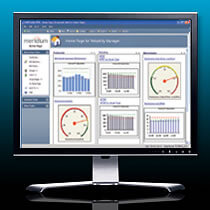Emerson’s Chris Womack shares his insights on terminal and tank monitoring in today’s guest post.
 In the world of tanks and terminals, there’s mounting pressure for more environmental protection in the form of “sustainability”—the use of recyclable and non-toxic materials—and an overall reduction in spills and emissions. That pressure has a few sources, including tightening environmental regulations in several countries, as well as expanding shale exploration, which brings exotic new chemicals into the field.
In the world of tanks and terminals, there’s mounting pressure for more environmental protection in the form of “sustainability”—the use of recyclable and non-toxic materials—and an overall reduction in spills and emissions. That pressure has a few sources, including tightening environmental regulations in several countries, as well as expanding shale exploration, which brings exotic new chemicals into the field.
 In this Hazardous Cargo Bulletin article (pdf here) touching on these subjects, Emerson’s Chris Amstutz introduces a role for predictive monitoring solutions, such as AMS Suite, in keeping spills and emissions to a minimum. “We’ve actually done a few projects with some of the larger terminal operators that focused on reducing hydrocarbon emissions during all movements, tanks, and loading operations,” he says in the quote.
In this Hazardous Cargo Bulletin article (pdf here) touching on these subjects, Emerson’s Chris Amstutz introduces a role for predictive monitoring solutions, such as AMS Suite, in keeping spills and emissions to a minimum. “We’ve actually done a few projects with some of the larger terminal operators that focused on reducing hydrocarbon emissions during all movements, tanks, and loading operations,” he says in the quote.
At first glance, it might seem a little off-topic. But Chris sees the equipment-monitoring approach as consistent with principles behind the new best-practices requirements and risk assessments in API/ANSI Standard 2350 Edition 4 (pdf).
Basically, if you want to avoid contaminating soil and groundwater with petroleum products or other chemicals, an ounce of prevention is worth a ton of cure. After all, reducing spills not only makes legal and environmental sense, it can increase operational efficiency and improve tank and terminal utilization.
(If you’re not familiar with the American Petroleum Institute / American National Standards Institute Standard 2350, it’s an industry-wide guideline intended to prevent overfills of unpressurized, above-ground petroleum storage tanks. Despite the name, it’s an international standard, and despite its specificity, its principles can apply “to any tank operation where there is a risk of overfilling,” says that pdf description.)
That HCB article features a few other gems about environmental protection and sustainability, too.
First, here’s a bit about the size of the task—not even including above-ground tanks.
There are approximately 584,000 underground storage tanks (USTs) across the US that store petroleum or hazardous substances. The greatest potential threat from a leaking UST is contamination of groundwater, the source of drinking water for nearly half of all Americans.
Most tanks are steel, but there are plenty of fiberglass and plastic-fiber tanks. They share some common problems.
In cold climes, epoxy coatings are highly susceptible to cracking as steel expands and contracts, and even more so if there are any torsion effects as is experienced with road tankers.
…
Some [fracking-related chemicals] can eat through inadequately protected steel, in some cases within hours. They include such exotics as formic acid, which is formidable challenge for storing securely in steel tanks.
And to be clear, these problems aren’t limited to steel tanks.
The average conventional epoxy coating life in frac tanks is about eight months.
So-called “veggie” coatings—the recyclable products of vegetable oil and gypsum—are gaining ground in the industry, according to author Tatsuya Nakagawa, who’s vice president of marketing at Castagra Products, which makes them. A few other sustainable technologies make an appearance too.
Using recyclable blast media [can minimize] the volume of spent material that ultimately ends up in landfill. New LED light technology is not only highly efficient but also long lasting. It runs cool and provides outstanding light coverage for hazardous areas where pipes and equipment abound.
So it may not always be easy to improve environmental protection and sustainability, but it doesn’t necessarily have to be more expensive—especially when compared to a hefty fine, a big cleanup, or lasting damage to the natural world.




